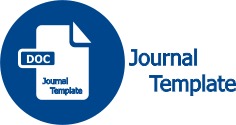PEMIKIRAN DAN MAZHAB EKONOMI ISLAM KONTEMPORER
DOI:
https://doi.org/10.30651/blc.v7i01.689Abstrak
To see why economics has not been found as a separate discipline in the past, and also to find out why many Muslim thinkers not only has the ability in one area of Science.
           In addition, to determine whether the relevance of Islamic economics is a combination / mix of the two systems (capitalism and socialism) or whether it stands alone and is an alternative economy in the current era. Then we can flashback through a brief history / historical portrait of contemporary Islamic economic thought.
Islamic economic thought themselves more or less just starting to be documented since the three centuries since the death of the Prophet Muhammad. Some thinkers are quite famous among others: Abu Yusuf (731-798), Yahya ibn Adham (818), El-Hariri (1054-1122), Tusi (1201-1274), Ibn Taymiyya (1262-1328), Ibn Khaldun (1332-1406) and Shah Waliullah (1702-1763). After that comes a contemporary thinkers of the 20th century are categorized in three groups of schools of thought, namely: First, the School Baqir As-Sadr; Second,MainstreamSchool, and Third,CriticalAlternative School.
      From there we can mengkonklusikan, for those who want or wish to concept / discourse can wear a school of Baqir as-Sadr, but if you want to operationalize / harokah then use a mainstream school and if he wanted both of them and continue to evolve dynamically means wearing / using alternative schools is critical, because Islamic economics is a discourse that is debatable because the truth is a human interpretation of the Qur'an and Assunnah that need to be tested and reviewed constantly.
Key Word: The school of contemporary, historical portraits, Is economic thought
Referensi
Adiwarman A. Karim, Ekonomi Mikro Islami, Ed. 3 (Jakarta : PT. Raja Grafindo Persada, 2008).
------------, 2004, Sejarah Pemikiran Ekonomi Islam, Raja Grafindo Persada, Jakarta.
Afzalurrohman, Doktrin Ekonomi Islam, (Yogyakarta : Dana Bhakti Wakaf, 1996)
Ari Sudarman, Ekonomi Mikro-Makro (Teori Soal dan Jawaban), (Yogyakarta : BPFE.,1991).
Bambang, S. Matematika untuk Ekonomi, ( Jakarta : Penerbit Erlangga, 1990).
Ghazali, Abu Hamid al-Ihya ‘ulum al – Din, Beirut : Dar an-Nadwah, t.t.
M.A. Mannan, Judul asli : Islamic Economics Theory and Practise, diterjemah oleh : M. Nastangin, Teori dan Praktek Ekonomi,(Yogyakarta: PT Dana Bhakti Wakaf, 1997),hal. 148.
Maryatmu, (2000) Ilmu Ekonomi Mikro, Yogyakarta : andi Offset.
Muhammad, Ekonomi Mikro dalam Perspektif Islam (Yogyakarta :BPFE.,2004).
Rudy P. Sitompul, judul asli “Macroeconomics, 3rd Edition†Judul terjemahannya:Sejarah Pemikiran Ekonomi Islam, (Jakarta: Erlangga, 1986),hal.19.
Sadono Sukirno, Sejarah Pemikiran Ekonomi Islam Modern Perkembangan Pemikiran dari Kalsik hingga Keynesian Baru, (Jakarta: PT. RajaGrafindo Persada, 2000)
Ismail Nawawi, (2009), Ekonomi Islam Perspektif Teori, Sistem dan Aspek Hukum, Putra Media Nusnatara (PMN), Surabaya.
Imamudin Yuliadi, Ekonomi Islam Sebuah Pengantar, (Yogyakarta, LPPI :2001).














